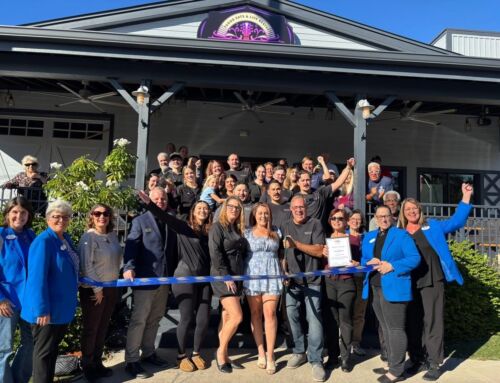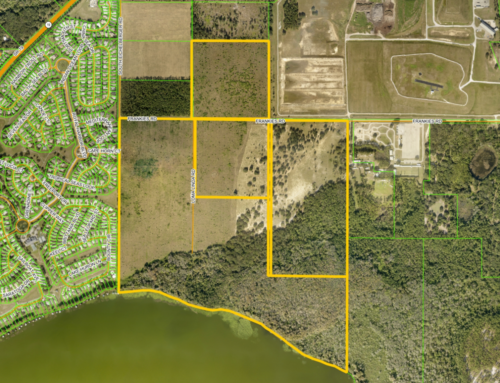Amid growing public concern over rapid development and the future of Lake County’s rural character, Commissioner Leslie Campione is speaking out — urging city leaders to take a stand against annexing unincorporated rural and rural transition lands.
In a detailed editorial, Commissioner Campione outlines the limits of the county’s legal authority when it comes to curbing growth and calls on municipalities to shoulder more responsibility in managing development patterns. Her message comes as residents raise questions about development in the Wolf Branch Innovation District and the broader impact of expanding subdivisions throughout Lake County.
It reads:
“Lake County’s cities hold the “key” to preserving Lake County’s character by saying “no” to certain annexations and leaving unincorporated rural land alone. Subdivisions are being built at an alarming rate in Lake County, and many are occurring as a result of cities annexing unincorporated land that is designated as either Rural or Rural Transition. Florida’s growth management laws are severely flawed because they essentially promote growth and sprawl, and courts give deference to cities, so it’s difficult to win an annexation challenge. To make matters worse, new laws proposed in the current Legislative session would eliminate local regulations and open the door to high-density development on agricultural lands and apartments on lands adjacent to existing apartments if the same party owns the land.
Currently, Florida law allows city governments to annex Rural and Rural Transition land (including lands in the Rural Protection Area) in the unincorporated area and rezone this land to high densities with total disregard of a county’s future land use map and comprehensive plan. No matter how much time and effort has gone into long-range planning, the County’s Future Land Use Map can be ignored when cities annex these areas. Fortunately, lands in the Wekiva Protection Area, the Green Swamp Area of Critical State Concern, Florida State Parks, the Ocala National Forest, and conservation lands owned by Lake County and the Lake County Water Authority are protected in perpetuity and off-limits. More than 60% of Lake County is either blue ways and lakes or conservation land. So, when you feel especially upset by the huge influx of new residents and the development explosion, take heart in the fact that so much of our county will be protected in perpetuity and certain lines cannot be crossed. I must believe that any legislator who decided to go after such lands would have a short-lived stint in the legislature.
But the annexation of unincorporated Rural and Rural Transition land by cities changes Lake County’s landscape forever and threatens the very characteristics that make Lake County unique. These decisions add urban densities to narrow roads, create congestion, and compound unsafe conditions. When a city annexes into these areas, it should be required to fund road improvements in advance of development or assure that improvements are slated to come online in the future. But leaving “rural” land alone would be the most effective way for cities to preserve Lake County’s character.
The Board of County Commissioners (BCC) has no jurisdiction over annexation decisions made by the 14 cities in Lake County unless there is a clear violation of annexation law. However, as noted above, the current annexation laws promote rather than manage growth. Only city residents can influence these decisions and cause our cities to slow the rate of annexations by leaving “rural” lands alone.
I have been asked why the BCC doesn’t simply place a moratorium on all new development to allow “infrastructure to catch up” and protect rural land. A development moratorium adopted by the BCC would not apply to lands within a municipality or lands being annexed into a municipality. Furthermore, in Florida, a moratorium must be temporary, lasting no more than six months. It must be tied to a specific action being taken to alleviate the condition that justified the moratorium.
This means that any “pause” created by a moratorium would be very short-lived and could still subject the County to lawsuits by landowners who are trying to use their land and exercise their rights. However, if cities committed to leaving rural lands alone and not annexing these areas, this would be far more effective than a temporary moratorium. If other types of annexations located on substandard or rural roads are denied by cities until such time as infrastructure is in place or a plan to fund needed improvements is coordinated with the County, this would have a huge positive effect on managing growth.
Is it possible that elected city officials have not been advised that they are legally allowed to say “no” to annexations? It seems they are being told just the opposite – that to make their city financially viable, they must say “yes” to every annexation they receive. However, the truth is that this is a never-ending cycle, and only certain types of new growth pay for themselves and enhance a city’s financial condition. Much of what we see happening right now is not of that type of development.
Then there is the question of a shortage of “attainable” housing, as if the only way to meet this need is to place this housing in rural areas where land prices are lower. The most effective way to address attainable housing that can be afforded is through “infill” development and redevelopment, which involves utilizing empty lots within current city limits or demolishing dilapidated structures in areas that already have existing infrastructure and central utilities.
For those who may be asking why the BCC still approves some new projects in unincorporated Lake County and particularly in areas that seem rural in nature, and why these projects are any different from city projects and annexations referenced above, the simple answer is this: lands that are already zoned or designated for higher densities on the County’s Future Land Use Map and Comprehensive Plan have property rights and expectations that are guaranteed under the U.S. and State constitutions and Florida statutes, and landowners have relied on these designations. Ignoring these rights would subject the County to lawsuits and thwart the entire purpose of long-range planning efforts, particularly in keeping landowners and future buyers informed about what is planned for specific locations so that they can make informed decisions based on these expectations. While many residents want to stop growth altogether, if existing long-range planning is honored by Lake County’s cities rather than projects being approved in locations not slated for development or on roads incapable of handling urban development, we would see logical development patterns emerge, and Rural land would be protected.
Regarding the Mount Dora North and South Planned Unit Development (PUD) in the Wolf Branch Innovation District area near the terminus of the “453” (Wekiva Parkway), this land (about 550 acres) has been designated on the Lake County Future Land Use Map for over three decades as an Employment Center and Regional Office. The BCC recently approved a land use amendment from the Regional Office to mixed-use PUD to meet job creation requirements contained in a Florida Economic Development Grant already received (and spent) by Mount Dora and Lake County for infrastructure in this area. This mixed-use PUD was designed to meet job creation requirements for the Wolf Branch Innovation District, which has been designated as one of four strategic economic development corridors in Lake County, and to substantially comply with the design standards adopted by Mount Dora for its Wolf Branch Innovation District.
The County designated Mount Dora “South” PUD for job creation, with more than 10 million square feet available for light industrial uses, including flexible spaces for manufacturing, high-tech, research, distribution, and related purposes. By focusing on job creation and light industrial for the land south of State Road 46 adjacent to the Parkway, the parcel north of SR 46 adjacent to SR 46 and Round Lake Road, Mount Dora “North” PUD can be limited to non-industrial uses such as a town center, offices, retail and a mixture of housing types.
The approvals granted by the BCC did not increase the density and land uses above those that have been on the books for over 30 years. Through these approvals the developer is required to build a spine road between SR 46/Sorrento Avenue to Round Lake Road, including intersection improvements that will facilitate the relocation of Round Lake Elementary School “drop off/pick up” traffic away from Round Lake Road onto a new road called Vista Ridge; and provide a connection to Wolf Branch Road so that local traffic will have an alternative route other than Round Lake Road. Additionally, the approval of this project will facilitate significant drainage improvements, helping to alleviate flooding in the Wolf Branch/Round Lake Road area.
I hear from many residents who want growth to be stopped altogether. They believe the County has the authority to stop all growth, but the reality is that the BCC has virtually no legal authority to stop cities from annexing land and increasing densities. A temporary moratorium adopted by the County would have no jurisdiction over cities in Lake County. As described above, the BCC has an obligation to allow projects that are consistent with land uses and densities already shown on the Future Land Use Map and Comprehensive Plan, some of which have been designated for over 30 years and infrastructure has been specifically designed and built (or in the process of being built) in such locations. The most effective way to protect Lake County’s natural beauty and allow infrastructure to catch up to demand is for the County’s 14 cities to leave unincorporated “Rural” land alone and to say “no” to annexations on roads incapable of handling urban development unless a funding plan for infrastructure is in place.”









